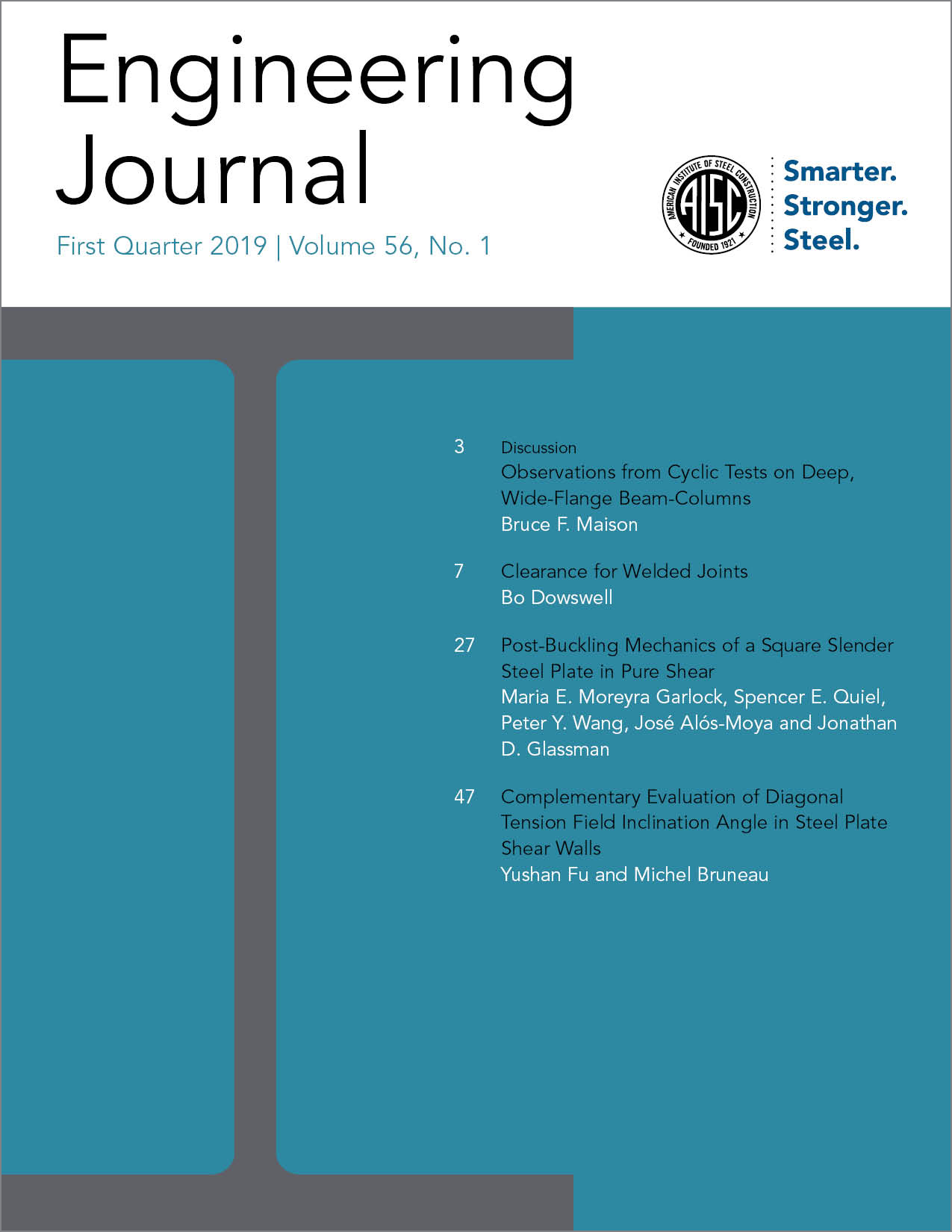Post-Buckling Mechanics of a Square Slender Steel Plate in Pure Shear
DOI:
https://doi.org/10.62913/engj.v56i1.1142Keywords:
shear, buckling, tension field, slender plates, web, plate girderAbstract
Thin (slender) steel plates possess shear strength beyond the elastic buckling load, which is commonly referred to as the post-buckling capacity. Semi-empirical equations based on experimental tests of plate girders have been used for decades to predict the ultimate post-buckling strength of slender webs. However, several recent studies have shown that the current models for predicting the ultimate shear post-buckling capacity of thin plates are based on some incorrect assumptions regarding their mechanical behavior. As a result, the current design equations provide an approximate estimate of capacity for the range of parameters in the test data upon which they are founded. This paper explores the fundamental behavior of thin plates under pure shear. Such a fundamental examination of shear post-buckling behavior in thin plates is needed to enable design procedures that can optimize a plate’s shear strength and load-deformation performance for a wider range of loading and design parameters. Using finite element analyses, which are validated against available results of previous experimental tests, outputs such as plastic strains, von Mises stresses, principal stresses, and principal stress directions are examined on a buckled plate acting in pure shear. The internal bending, shear, and membrane stresses in the plate’s finite elements are also evaluated. In this study, these evaluations are performed for a simply supported plate with an aspect ratio equal to 1.0 and slenderness ratio equal to 134. Results show that localized bending in the plates due to the out-of-plane post-buckling deformations appear to be a significant factor in the ultimate shear post-buckling capacity of the plate. Also, the compressive stresses continue to increase beyond the onset of elastic buckling in some regions of the plate, contrary to current design assumptions. Overall, this study provides new insights into the mechanics of shear post-buckling behavior of thin plates that can be exploited for design procedures that are consistent with mechanical behavior.

